#'40s music
Explore tagged Tumblr posts
Text
256: Maria Tănase // I

I Maria Tănase 1965, Electrecord
Maria Tănase’s Wikipedia entry repeatedly describes her as Romania’s Édith Piaf, and superficially I can see it: both are to my inexpert ear mezzo-sopranos, lived at the same time, died relatively young, and became cultural heroes in their respective nations. While Piaf remains a giant of global music and Tănase is little known outside her country, based on this 1965 compilation’s liner notes Tănase’s significance to Romanian music may surpass that of Piaf’s to France. As her biographer Harry Brauner (himself an interesting figure) tells it, Tănase was the artist most responsible for stitching Romania’s diverse folk traditions into a modern national music. Fascinated since girlhood by the folk songs taught to her by her parents and the peasant women who worked in her father’s plant nursery, throughout her life her hunger for music made her as much a folklorist as a popular singer. She amassed a repertoire of over 400 songs, many of them previously unrecorded pieces she learned directly from elderly peasants who were among the last living repositories of their regions’ oral traditions.
youtube
Like her contemporaries Atahualpa Yupanqui in Argentina and Pete Seeger in America, her work brought together traditional songs from various regions of her country at a time when that nation’s identity was still being forged—in Tănase’s lifetime Romania had expanded from the so-called Old Kingdom of Moldavia and Wallachia to include Bessarabia, Banat, Bukovina, and Transylvania, and bounced between monarchy, fascism, and communism. Between these regions (and within them), there were many distinct traditions, and the presence of a transcendent star who represented a cross-section of these styles had a unifying effect. The tracks compiled on Maria Tănase I attest to this diversity: the alternately somber and snaky “Lac-așa” recalls the historical influence of the Ottoman Empire; “Aseară ti-am luat basma” has the flavour of Eastern Jewish or Romany music; the steadily-increasing tempo of “Ciuleandra” puts me in mind of a Russian dancing game where the musicians keep speeding up until only the most athletic dancer remains standing.
Most of these songs are arranged for smaller combos (sometimes just a few violins and woodwinds) as befits their modest origins, though Tănase’s accompanists are the Orchestra de muzică populară a Radioteleviziunii, likely some of the best musicians in the country. In other words, these are not Alan Lomax-esque ethnomusicological recordings but represent an artist accustomed to performing on the continental stage, with the professionalism that entails. Still, my favourite piece by far is the haunting and minimal “Doină din maramureş,” a starkly theatrical shepherd’s lament with a wordless refrain that sounds like Tănase vocally channeling a flute. Brauner describes it as “a personal creation, in which the singer combines a number of elements existing in different regional doinăs” (doinăs being a style of improvised Romanian music). Tănase’s reading of the text is poised and hooded, ratcheting up the tension to the point of shivers, only to let the song descend back into near silence. Eastern European languages strike my ear as intrinsically gothic (thanks no doubt to the pervasive cultural influence of Dracula), and Tănase’s Romanian lends “Doină din maramureş” and the rippling black shroud that is “Cine iubește și lasă” an air of foreboding romance that would be lost in any other tongue.
As an underknown (to the West) but major artist in her time and place, Maria Tănase is ripe for rediscovery by those with a taste for early twentieth century music from outside the usual cultural centres.
youtube
256/365
#Maria Tănase#maria tanase#romania#romanian music#harry brauner#'30s music#'40s music#'50s music#'60s music#female singer#female musicians#music review#vinyl record#edith piaf
2 notes
·
View notes
Text
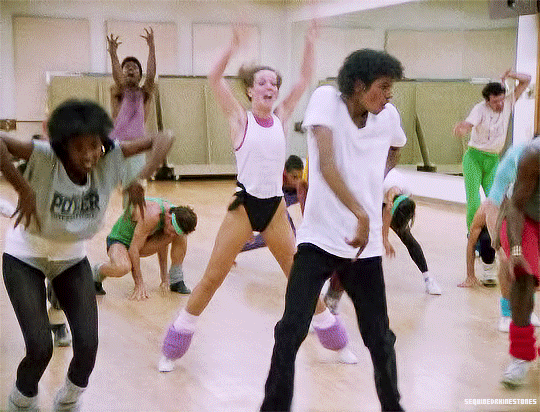
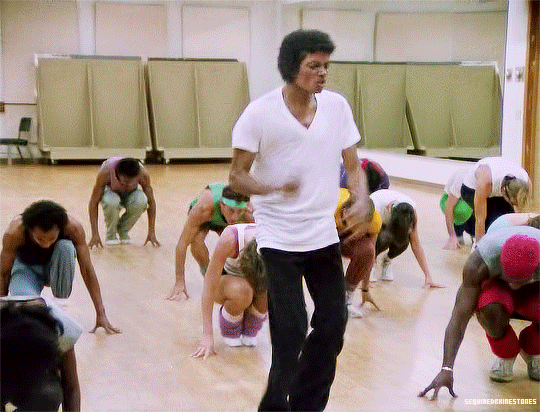

MICHAEL JACKSON // (05/∞) Thriller 40: The Album That Changed It All
#michael jackson#80s#king of pop#thriller#thriller 40#useranimusvox#throwbackblr#usermusic#tuserlauren#dailymusicians#blogmusicdaily#african american#80s fashion#80s aesthetic#80s music#80sdaily#80s style#dance#dance practice#sequinedgifs
4K notes
·
View notes
Text
thinking about older bf!simon who feels younger for loving you
you who has to be holding his hand, other hand around his upper arm, pulling him down to kiss his cheek
you who wraps your arms around his waist, putting your hands in his pockets and rubbing your cheek against his back
you who still gets giggly when he walks around naked, a heat on your cheeks that he can feel across the room
you who lays back on the bed and beckons him over with a single digit, squealing when he tugs you to him by your ankle
you who can make a sniper’s hands shake by asking him to do up the zipper on your back or just placing your feet in his lap
you who can make him hard with only a pretty smile or even just a “siiiiiimon” like he’s hitting puberty for the first time
you who makes him pull over so you can ride him in the front seat of his car, only after you’ve been teasing him all fucking dinner
you who, in a room full of people, can give him a look that only he knows to mean “take me home right now and i’ll do that thing you like”
you who teaches the old dog new tricks, making him realise that there really are “things he likes” that he hadn’t even known about
simon doesn’t just feel younger, he feels fucking born again
#need my 40 something year old baby#need to listen to music he doesn’t like and wear clothes that give him a stiffy in the supermarket#older bf!simon#simon riley smut#simon ghost riley smut#simon riley x reader#simon ghost riley x reader#simon riley drabble#simon ghost riley drabble#simon riley blurb#simon ghost riley blurb
5K notes
·
View notes
Text

3K notes
·
View notes
Text
The suitors all call Odysseus "old King" like ??? Do they not know his name or who he is? Did they just see a posting "Looking for new king of Ithaca against Queen's will, dw about who you're replacing" and a bunch of dudebros just went hell yeah lets go?
The only time some of them seem to have any knowledge of the old kings personality is when one guy is like "this guy cunning" and another goes "smartest king around tbf" and that is IT. Saying "he's more cunning than I thought" about the guy who's basically responsible for bringing down Troy is CRAZY. Which leads me to believe that that guy doesn't actually know that this is THE Odysseus. which, again, CRAZY.
#id shoot everyone too if they called me old when im ONLY 40#i mean come on#old king my ass#“old kings bow” JUST SAY HIS NAME#epic the musical#jorge rivera herrans#epic the troy saga#epic the wisdom saga#epic the cyclops saga#lol#epic the thunder saga#epic the vengeance saga#epic the ithaca saga#ithaca#funny#shitpost#dumb#odysseus epic#odysseus
763 notes
·
View notes
Text

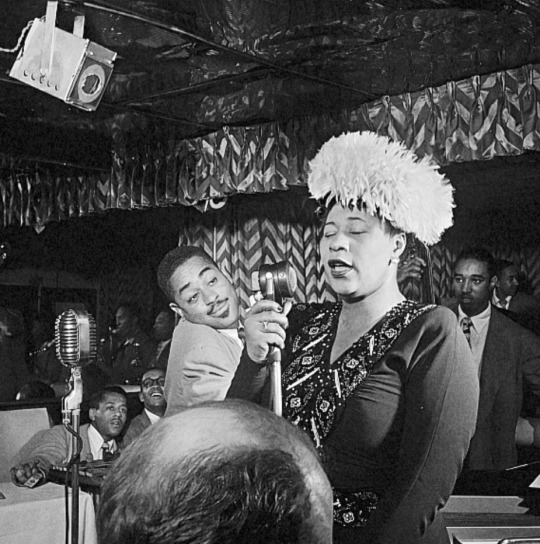
Ella Fitzgerald & Dizzy Gillespie, 1947 ♡
#ella fitzgerald#dizzy gillespie#jazz music#jazz#black vintage#40s fashion#1940s#40s#black love#black girl aesthetic#soft black girls#70s#70s style#70s vibes#70s vintage
2K notes
·
View notes
Text

I’m so incredibly sane and normal about @tmnt-turtle-tunes and their new song you have no idea……
#Day be so fine#Then boom#This line stabbed me in the heart 40 times#how do I recover now#istg this fandom#these turtle#these tunes#kdmbdgejejdbdhdkdmmd#cas fanart tag#somerandomdoodles#cas music#rottmnt#rise of the tmnt#riseofthetmnt#leonardo#future leonardo
4K notes
·
View notes
Text

congratulations fiddleford. ya made it to Friday (plays a diddy)
#gravity falls#fiddleford mcgucket#fiddleford friday#My first fiddleford Friday… historic event#I’ve come out of my day long 40s/50s banjo music deep dive with a crush on pete seeger#So that’s something ig
580 notes
·
View notes
Text




Gene Kelly and Jerry Mouse - Anchors Aweigh (1945)
#gene kelly gif#anchors aweigh gif#jerry mouse#40s musicals#40s animation#george sidney#dance choreography#MGM musicals#40s comedy#tom and jerry#40s movies#1940s#1945#gif#chronoscaph gif
391 notes
·
View notes
Text

Original Art - American Weekly Cover (Dec19th1948)
Art by J.C. Leyendecker
#JC Leyendecker#Christmas#Art#Magazines#American Weekly#Vintage#Original Art#I Saw Mommy Kissing Santa Claus#Music#Illustration#Santa Claus#1948#1940s#40s
208 notes
·
View notes
Text
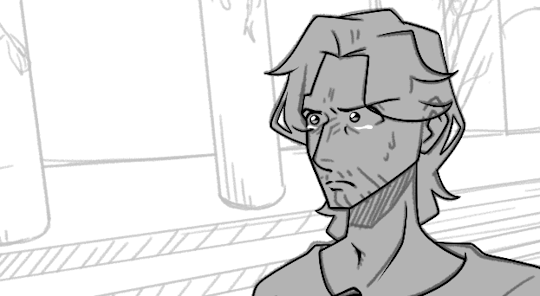
Circe gives Odysseus more trauma.
#I have like 40 sec left! So I think maybe it will be finished next week?#epic the musical#animatic work in progress#epic the circe saga#there are other ways
549 notes
·
View notes
Text
90: Joe Coleman // Infernal Machine
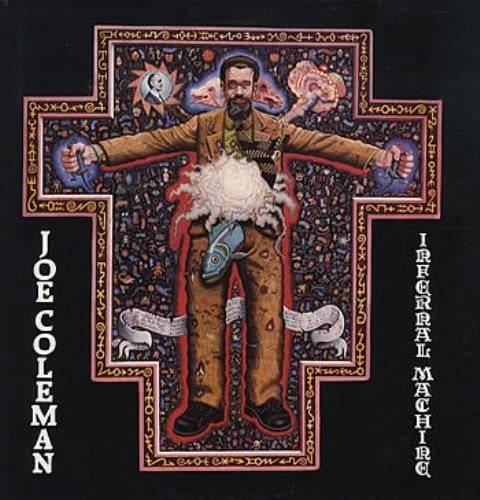
Infernal Machine Joe Coleman 1990, Blast First
Joe Coleman emerged in the late 1970s from the alternative comix scene established by artists like Art Spiegelman (Maus), Kim Deitch (Waldo the Cat), and Bill Griffith (Zippy the Pinhead), but found greater notoriety as a painter and a shock artist. Here’s Spin’s Dean Kuipers on a performance (as his character Professor Mombooze-o) that resulted in one of Coleman’s numerous arrests:
“Boston, October 22, 1989. Reel after reel of ancient hardcore porno films flash onto a black screen onstage at BF/VF—the Boston Film/Video Foundation—grey and grainy, somebody else's fucking and sucking memories of indeterminate age. After 20 minutes, the hundred people in the audience are quiet and disarmed. The lights come up.
Joe Coleman instantly comes whapping through the film screen from behind, hanging upside down from a climber's harness attached to the ceiling, screaming and choking like a man condemned. This is the man everyone came to see. Green flames and acrid smoke belch from his chest as strapped-on explosives detonate under layers of shirt, ratty duck jacket and lab coat. Half a minute later, the booming and gnarling subside and Coleman's wife, Nancy, leaps out and douses him with goats’ blood to put out the fires. She cuts him down and he tears away what's left of the black screen to reveal a dead goat hanging upside down, twisting slowly. The goat is real. The odor of spattered blood and gunpowder seeps into the stunned crowd.
'Here are Mommy and Daddy!' cries Coleman, rushing to the front of the stage and pulling two live white mice from his pockets. He sits down on the edge of the stage and holds Mommy and Daddy up to his scorched beard and talks to them. Meanwhile, Nancy pulls out her Zippo and torches a cloth/plastic effigy of Coleman. The stage is consumed by fire as Joe screams at the squirming mice, 'I'll eat the cancer out of you!' and bites the head off Daddy, spewing it back into the audience. Then he snaps Mommy's head: hers he swallows.
This is Joe Coleman's stone ritualization of his mother's death. Four days earlier, she had died of cancer.
The befuddled firemen who arrive minutes later are sure that this must be the meeting of a satanic cult. As police investigators pick through the chaos of greening humans, brown smoke and bloody carcasses, the owners of BF/VF finger Joe and Nancy, then fire manager Jeri Rossi. All three are arrested and Joe is charged with—among other things—an old Massachusetts blue law charge that hasn't been used since the 1800s: Possession of an Infernal Machine."
(You can watch an excerpt of a similar performance in the 1988 pseudo-documentary Mondo New York, though I do not recommend doing so if you’re troubled by animal cruelty.)
The Infernal Machine LP is a figurative soundtrack to the Mombooze-o character, which he retired following the Boston bloodbath. Side one (“Homage to Mass Murderers”) intersperses vintage country and blues murder ballads with exploitation film clips and interviews with murderers Ed Kemper and Charles Manson. Side two (“Infernal Machine”) is a collage of clips from TV shows and ‘40s films noir, audio from Coleman’s Mondo New York performance, and early live recordings by NYC noise punks Steel Tips.
youtube
The overall effect is eerie, and there are some powerful juxtapositions. The way the clip of Kemper’s tearful description of murdering his own mother segues into Eddie Noack’s 1968 recording of “Psycho” underscores the song’s unnerving potency; tucked between relatively jaunty tunes by Bessie Smith and Tex Ritter, a long clip of character actor Don Russell’s genuinely moving performance as a kidnapped schoolteacher begging for his life from 1963’s The Sadist (based on the Charles Starkweather murders) seems to represent man’s powerlessness in a capricious universe. Side two is bookended by excerpts from the 1947 film Nightmare Alley, in which a series of disasters reduce cocksure Stan Carlisle (played by Tyrone Power) from his position as a carnival barker to the role of a despised geek who earns a meagre living by biting the heads off chickens in front of jeering crowds. The implication is that, as Mombooze-o, Coleman himself has been similarly forced into the role of a freak by the diseased contemporary world.
The LP includes a twelve-page booklet of Coleman’s paintings and, most interestingly, a picture-disc reproduction of details from its cover image, Portrait of Professor Mombooze-o. I’m not normally much interested in picture discs, but the sight of Coleman’s zombified head spinning on the table (or the dead fish bursting from his crotch on the flip) really does complete the package. It’s as a visual artist that Coleman’s chief gifts reveal themselves. His obsessively detailed paintings, which he works out over months and sometimes years using a single horsehair brush, are the most successful transference of an alt. comix sensibility to the gallery I’ve come across. If the work in R. Crumb’s classic Weirdo anthologies could feel like a mutated, devolved descendent of the feverish iconography of sixteenth century religious art, Coleman’s paintings are that mutant culture’s return to high art.
Coleman frequently conflates people like Charles Manson with Jesus Christ, saying in a ‘90s tour of his collection of oddities that he keeps a lock of Manson’s hair and a sample of Christ’s marrow. Falling back on the Blakean idea of a marriage of heaven and hell, he claims that if the pair’s DNA could be mixed in a clone it would create a perfect Messiah. However, the mingling of deviants and prophets in Coleman’s hagiographic art does not, as Coleman seems to mystically intend, elevate the former towards divinity so much as it pulls the latter earthward. Serial killers are, almost without exception, insipid creatures, powerless to explain their own behaviour with any real insight—as are for that matter, many holy men. Maniacs and religious figures are akin in the sense that each possesses intense evocative potential. A crazed killer’s actions, which seem both primal and alien, tear at the fabric of our notion of a shared reality. It is tempting to read their murders, being as superficially inexplicable as miraculous events, as signs or portents, the killers themselves as visionaries. Put another way, both religious phenomena and psychopathic behaviour create a void of ostensible meaning that humans are agitated to fill. Meaning does not arise from their actions but is imputed to them by witnesses. In Coleman, these boring, broken men who kill find a witness capable of making them a genuinely mythic force.
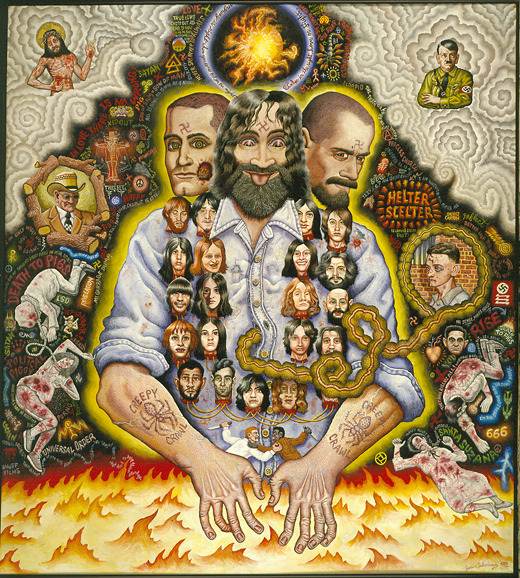
Portrait of Charles Manson, 1988 I find Coleman’s art as inspired and fascinating as I find his philosophy stunted and dull. In an interview with Richard Metzger on the BBC series Disinformation, Coleman says, with reference to mass murderer Richard Speck, “I don't want to kill anybody, but I want to express that pain. I want to express what he was trying to express. What if he didn't have to do that? And maybe, just maybe, art is a thing where you can do that.” Ten years previously, Coleman told an anecdote in Mondo New York about covering himself in blood and harassing random women at New York bars; when their boyfriends would intervene, he’d light the fuse on the hidden explosives attached to his chest and then calmly walk out of the bar in the confusion, enjoying the screams and smoke. Whether he’s spinning a yarn or recounting something he actually did, it’s clear he gets the same petty thrill out of terrifying strangers as the sickos (both real and fictional) excerpted on the Infernal Machine LP do. This doesn’t make him a monster, but it does clarify that when he talks about “expressing” their pain he also wants his share of their freedom to do violence. Of all the reasons it’s good for Coleman that he ended up an artist instead of a cut-rate David Berkowitz, the most telling is this: if he had, what artist of his quality would’ve wanted to take him as their subject?
90/365
#joe coleman#vinyl record#music review#picture disc#serial killers#charles starkweather#charles manson#manson family#richard speck#richard metzger#nightmare alley#alt. comix#comix#weirdo#mondo#'80s music#'50s music#'40s music#'60s music#'70s music
4 notes
·
View notes
Text


MICHAEL JACKSON // (06/∞) Thriller 40: The Album That Changed It All
#michael jackson#80s#king of pop#thriller#thriller 40#useranimusvox#throwbackblr#usermusic#tuserlauren#dailymusicians#blogmusicdaily#filmedit#african american#80s music#dance#dance practice#choreography#userstream#userbbelcher#sequinedgifs
702 notes
·
View notes
Photo



RHEA RIPLEY & CHRIS MOTIONLESS WrestleMania XL — April 6, 2024
#rhea ripley#people#wwe#wrestlemania#wrestlemania 40#wrestlemania xl#motionless in white#music#rhearipleyedit#wweedit#wrestlingedit#miwedit#musicedit#bandedit#mystuff#userangelic#userspacey#userridge#tusermiles#useroaks#i love how u can see her excitement <3#anyway posting again bc i wanted to show that i have learned how to color this DAMN PERFORMANCE
202 notes
·
View notes
Text
I enjoy looking through these Wicked AU’s where the Wizard stays and raises Elphaba and becomes a (still evil and very morally questionable) but loving father to her and her friends. However, I have a controversial opinion that this works best when the Wizard is written as someone who becomes a dad in his early 20’s/college age.
Like no offense to Jeff Golblum’s casting, he does a fantastic job, but he’s also in his 70s, which would make him in his 40s when he had Elphaba, and I just do not see that for the Wizard. Crying about how “yes, he was hooking up with random women and drinking strange beverages and yeah, he always wanted to be a dad, but no, he never ever considered that one thing might lead to the other because he was too busy enjoying his youth! His 42-year-old youth, far too young to consider fatherhood even on the table even though it was all he ever wanted and he had a whole song about it.”? I just personally feel like the Wizard’s actions make so much more sense for someone who’s in their early 20’s, just arrived in a magic land, is a generally selfish and irresponsible person, and isn’t considering the future or long term impact of their actions. Plus this man is from the late 1800s/early 1900s so whatever level of child development knowledge you picture this version of the Wizard having, lower it even further if you can.
With this in mind, I would appreciate a Wicked AU where if the Wizard is gonna stick around to try to be a dad, his young age and carefree, irresponsible, and somewhat selfish attitude is reflected in his parenting choices. He’s not a teen dad, but he’s certainly not much older. Melena Thropp hands him the baby and is he’s like “why is she green?” And she’s like “I don’t know, but my husband can’t know about this, so that’s your problem now.” And the Wizard’s like “well, I suppose this is what happens when you repeatedly hook up with an older married woman in a magical land and drink weird potions with her. Wasn’t how I envisioned becoming a dad, but at least it’s not the weirdest Friday I’ve ever had.”
Then he takes Elphaba traveling with him and tries using the “loving single dad” image to impress women like he’s in a Hallmark movie, while also trying to casually ask people for advice on kids because he doesn’t have a clue. When do you send them to school? Do they have schools in Oz? Should he try to homeschool her? Elphaba starts reading on her own and instead of concluding she has great mysterious power the Wizard is like “wow, my little girl’s so smart, I guess some kids can just do that aren’t I lucky I don’t have to teach her?” and never questions it. No clue how child development works. No clue what is age appropriate. He’s taking five year old Elphaba along with him when he performs magic tricks in bars at midnight. He’s taking her to evil business meetings as he’s plotting to take over Oz when she’s too young to know what’s happening. His advisors witness Elphaba’s skill, tell him she’s the key to securing their power for all time, and he’s like “right? My daughter is so special, she’s my lucky charm! 🥰” not even realizing she’s obviously the witch that was prophesied because he thought all of Elphaba’s skills were just cute little quirks. The Wizard’s advisors suggest blaming the Animals, and the Wizard’s like “no, we can’t do that. My daughter loves them. We will blame someone else and spread malicious lies about them instead.” Like he’s still evil, he’s still scum, but he’s also like “I’m a dad now. I can’t arrest and torture my child’s friends. I’ve gotten a “father of the year” award in my Father’s Day card for the past nine years, I cannot jeopardize that when I’m so close to a decade winning streak.”
Eventually, Elphaba uncovers every evil thing her father is doing at like 14 and defeats him and his advisors with her super powerful magic because the Wizard’s advisors have been training her this whole time, hoping she’ll become their weapon while the Wizard has been encouraging her as a loving dad telling her she can “be anything she wants to be” and making sure all of Oz adores her. So when Elphaba defeats his armies, takes over Oz, and exposes all his crimes, he’s not even that mad. A little teenage rebellion, that’s all this is, plus her skill is so impressive, the Wizard can’t help but be a little proud, and she’s running things better than he ever could, so why not just let her do her thing and go back to building model replicas of Oz in the garage? His advisors are begging him to stop her and he’s like “why? She’s doing such a good job!” “She defeated us for all time! A pathetic child!” “Super powerful child is more like it. How could I not be proud?” “But you’re her father! Do something! Stop her! We must bring her down!” “Nonsense, teen rebellion is normal. All teenagers say stuff like “I want more independence” and “Dad, I love you, but what you and your friends are doing is morally bankrupt and as much as it hurts me, I have to stand up for what’s right even if it means standing against you”. It’s fine! It’s just a phase. Chill out and let the kid and her friends run things. Enjoy the retirement. I know I am.” “Sir, you’re only 38.” “Exactly. The perfect retirement age. I’m an old man.” “But Elphaba single handily defeated our armies! Her power is out of control and cannot be contained!” “Again, all I’m hearing is how impressive she is. And to think, it’s all thanks to me. Raising her as a single father and she becomes the most powerful witch in all of Oz, can you believe it? Gosh, I’m wonderful.”
#He’s so pathetic#The wholesome father daughter relationship I want to see is her gently taking his power from him#the way you take the car keys from your grandpa except in this case it’s a man in his 30s/40s who never grew up#Fiyero’s like “so you arrested your own father for all the terrible things he did?”#And Elphaba’s like “yeah. I don’t think he realizes yet. He’s just been in his cell happily playing with his little models.”#wicked#wicked the musical#wicked 2024#wicked au#wicked elphaba#elphaba thropp#oscar diggs#oscar zoroaster phadrig isaac norman henkle emmannuel ambroise diggs
111 notes
·
View notes
Text






E-40 – Tell Me When To Go ft. Keak Da Sneak (2006)
#e-40#tell me when to go#keak da sneak#2000s#music#musicgifs#usermusic#my gifs#gifs#gifset#soupy's#hip hop#rap#my ghetto report card#music videos#music video
149 notes
·
View notes